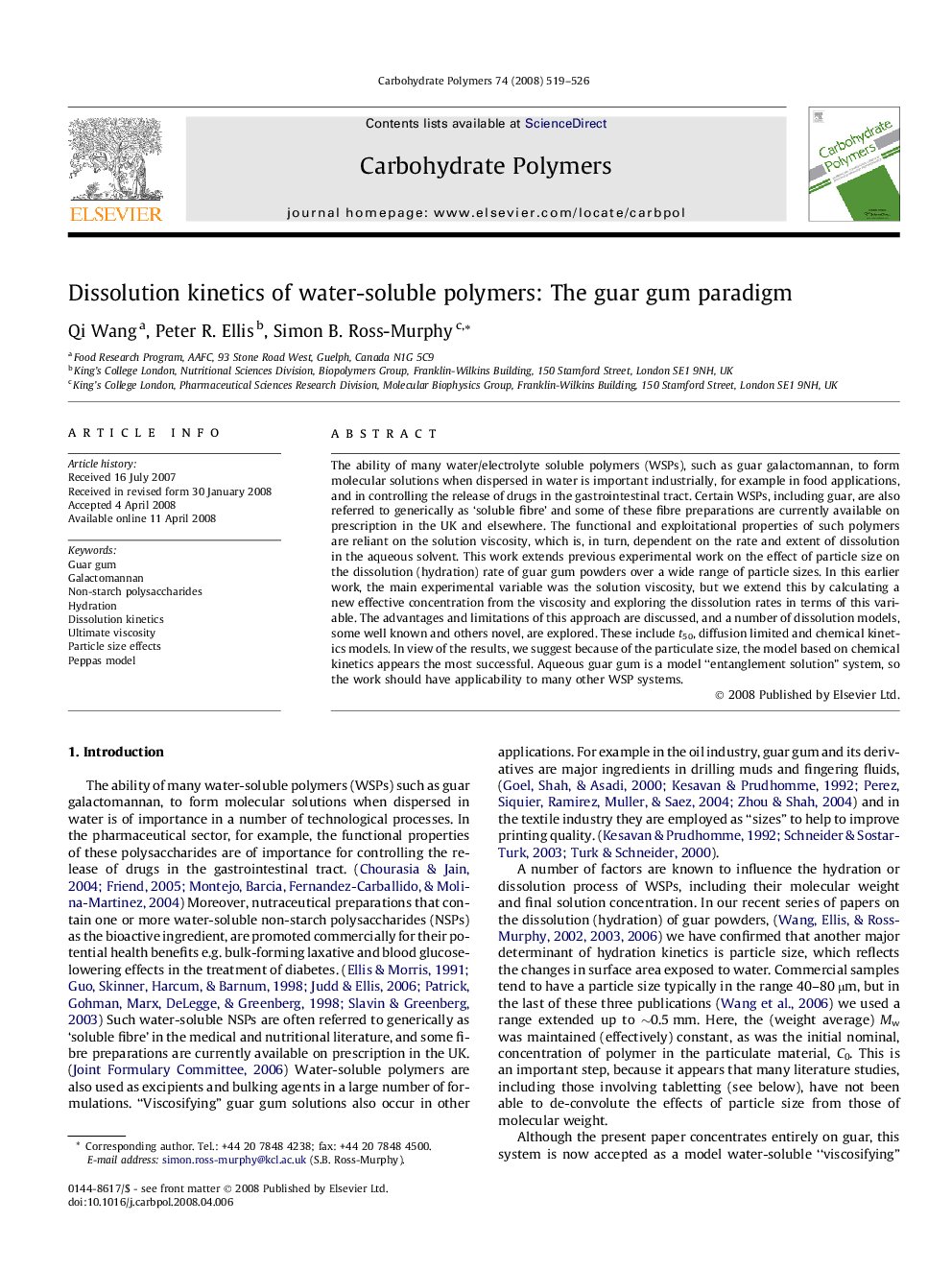| Article ID | Journal | Published Year | Pages | File Type |
|---|---|---|---|---|
| 1386421 | Carbohydrate Polymers | 2008 | 8 Pages |
The ability of many water/electrolyte soluble polymers (WSPs), such as guar galactomannan, to form molecular solutions when dispersed in water is important industrially, for example in food applications, and in controlling the release of drugs in the gastrointestinal tract. Certain WSPs, including guar, are also referred to generically as ‘soluble fibre’ and some of these fibre preparations are currently available on prescription in the UK and elsewhere. The functional and exploitational properties of such polymers are reliant on the solution viscosity, which is, in turn, dependent on the rate and extent of dissolution in the aqueous solvent. This work extends previous experimental work on the effect of particle size on the dissolution (hydration) rate of guar gum powders over a wide range of particle sizes. In this earlier work, the main experimental variable was the solution viscosity, but we extend this by calculating a new effective concentration from the viscosity and exploring the dissolution rates in terms of this variable. The advantages and limitations of this approach are discussed, and a number of dissolution models, some well known and others novel, are explored. These include t50, diffusion limited and chemical kinetics models. In view of the results, we suggest because of the particulate size, the model based on chemical kinetics appears the most successful. Aqueous guar gum is a model “entanglement solution” system, so the work should have applicability to many other WSP systems.
